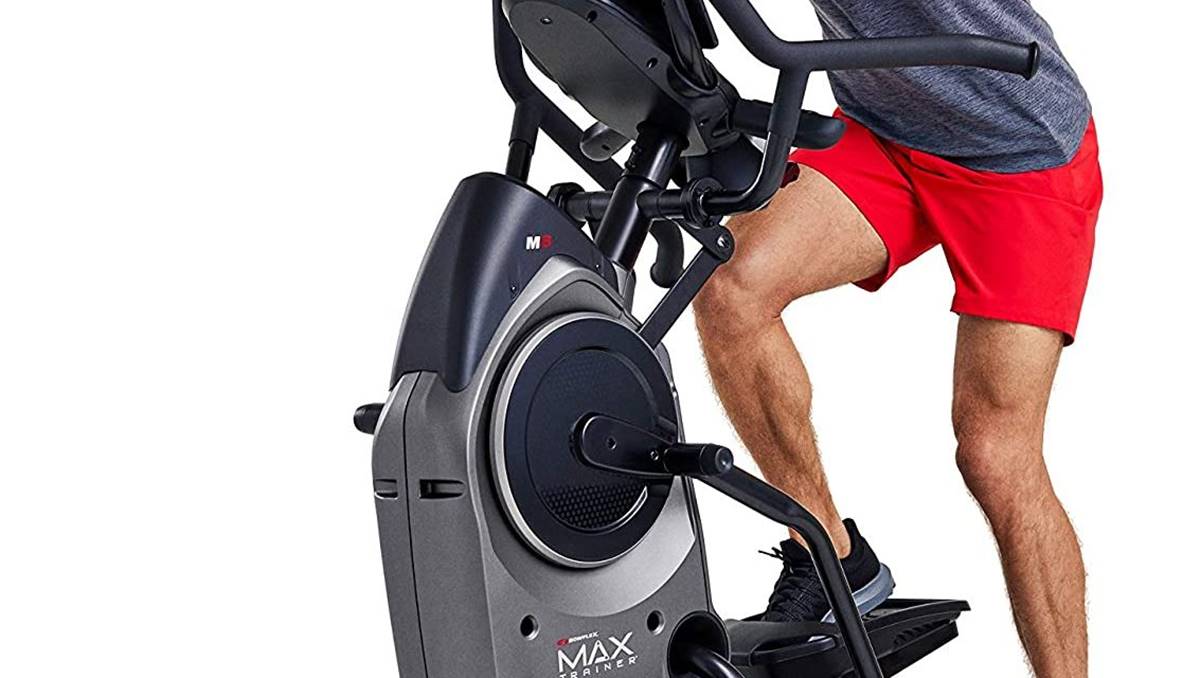Home>Misc>Featured>What Factors Influence Interval Training Intensity


Featured
What Factors Influence Interval Training Intensity
Modified: August 21, 2023
Learn about the key factors that significantly impact the intensity of featured interval training, enhancing your workout effectiveness and achieving optimal results.
Introduction
Interval training is a popular and effective method of exercise that involves alternating periods of high-intensity effort with periods of rest or lower intensity. This training approach not only helps to enhance cardiovascular fitness, but it also promotes fat loss, boosts metabolism, and improves overall athletic performance.
However, when it comes to interval training, the intensity of the workout plays a crucial role in determining its effectiveness. Interval training intensity refers to the level of effort exerted during the high-intensity intervals. It is influenced by a variety of factors, which are essential to consider when designing an interval training program.
In this article, we will delve into the different factors that influence interval training intensity and how they can impact your workout. Whether you are a seasoned athlete or just starting to incorporate interval training into your fitness routine, understanding these factors can help you optimize your workouts and achieve your fitness goals.
By fine-tuning the intensity of your interval training, you can challenge your body, improve endurance, and achieve the desired results more efficiently. So, let’s explore the key factors that affect interval training intensity and learn how to harness their power to maximize the benefits of your workouts.
Definition of Interval Training Intensity
Interval training intensity refers to the level of effort exerted during the high-intensity intervals of an interval training workout. It is a measure of how hard you are pushing yourself during the challenging portions of the workout. In other words, it determines how much you are pushing your cardiovascular system and muscles to adapt and improve.
Interval training typically involves alternating between periods of high-intensity exercise and periods of lower intensity exercise or rest. During the high-intensity intervals, you are pushing yourself to work at a near-maximum effort level. This level of effort goes beyond your comfort zone and challenges your body to adapt and become stronger.
The intensity of interval training is individualized, meaning it varies from person to person based on their fitness level, goals, and overall exercise capacity. What may be high-intensity for one individual could be considered moderate for another. It is important to establish your own baseline and gradually increase the intensity over time as you become fitter and more comfortable.
Interval training intensity is typically measured using different methods, such as heart rate monitoring, perceived exertion scales, and rate of perceived exertion (RPE). Heart rate monitoring involves tracking your heart rate during the high-intensity intervals to ensure you are working within the desired target heart rate zone. Perceived exertion scales and RPE are subjective measures that allow you to rate your perceived effort level on a scale from 1 to 10, with 10 being the highest intensity.
Understanding and monitoring interval training intensity is vital for optimizing the benefits of this training method. Working at the appropriate intensity allows you to challenge your body and stimulate physiological adaptations, such as increased cardiovascular capacity, improved endurance, and enhanced fat burning.
Now that we have defined interval training intensity, let’s explore the factors that influence it and learn how to manipulate these variables to create effective and personalized interval training programs.
Factors Influencing Interval Training Intensity
Several factors can influence the intensity of your interval training sessions. By understanding these factors, you can tailor your workouts to meet your specific goals and optimize your training outcomes. Let’s explore the key factors that influence interval training intensity:
1. Fitness Level
Your current fitness level plays a crucial role in determining the intensity of your interval training. Beginners may need to start with lower intensity intervals to build a solid foundation and gradually increase the intensity over time. On the other hand, advanced athletes may perform high-intensity intervals to maximize their training benefits.
2. Exercise History
Your exercise history and previous training experiences can impact your interval training intensity. If you have been consistently engaging in high-intensity workouts, your body may be accustomed to pushing its limits. In contrast, individuals with limited exercise experience may need to start with lower intensity intervals and gradually progress.
3. Specific Training Goals
Your specific training goals will influence the intensity of your interval training. For example, if your goal is to improve endurance, longer duration and moderate-to-high intensity intervals may be appropriate. If your focus is on increasing power and speed, shorter duration and high-intensity intervals may be more beneficial.
4. Type of Exercise
The type of exercise you choose for your interval training can impact the intensity. Different exercises require different levels of effort. For example, running sprints or cycling at high resistance will generally be more intense than utilizing lower resistance or performing bodyweight exercises.
5. Interval Duration and Intensity
The duration and intensity of your intervals directly impact the overall intensity of your interval training. Shorter and more intense intervals require greater effort and can elicit a higher intensity response. Longer intervals with lower intensity can still be effective for building endurance but may have a slightly lower overall intensity.
6. Rest Intervals
The duration and intensity of your rest intervals also influence the overall intensity of your interval training. Shorter rest intervals may result in a higher overall intensity, as it reduces the time for recovery. Conversely, longer rest intervals give more time for recovery and can help maintain intensity throughout the workout.
7. Environmental Conditions
The environmental conditions in which you perform your interval training can impact intensity. Factors such as temperature, humidity, and altitude can affect your body’s ability to regulate core temperature and oxygen uptake, ultimately influencing the overall intensity of the workout.
By considering these factors and making adjustments accordingly, you can personalize your interval training intensity to suit your needs, capabilities, and goals. Remember, it’s essential to listen to your body, gradually progress, and find the right balance between pushing yourself and avoiding overexertion.
Fitness Level
Your fitness level is a significant factor that influences the intensity of your interval training sessions. It plays a crucial role in determining how challenging your workouts should be and the rate at which you can progress.
For beginners or individuals who are new to interval training, it is essential to start at a level that is appropriate for their current fitness capabilities. Starting with lower intensity intervals allows your body to adapt gradually and build a solid foundation. Pushing yourself too hard from the beginning may lead to excessive fatigue, muscle soreness, or even injury.
As you become more experienced and continue to improve your fitness level, you can increase the intensity of your intervals. You can do this by increasing the duration of the high-intensity intervals or by pushing yourself to work at a higher intensity during these intervals.
Advanced athletes or individuals with a high level of fitness may already be accustomed to pushing their limits during workouts. They may need to incorporate more challenging intervals or higher intensity bursts to continue challenging their bodies and making progress.
It is important to remember that fitness level is relative and unique to each individual. What may be high intensity for one person might be moderate for another. It is crucial to assess your own fitness level and determine the appropriate intensity that challenges you without overexerting yourself.
If you are unsure about your fitness level or how to gauge the appropriate intensity for your interval training, consulting with a fitness professional or personal trainer can provide valuable guidance. They can assess your fitness level and help customize your interval training program based on your individual needs and goals.
Ultimately, with consistent effort and gradual progression, you can increase your fitness level over time. As you become fitter and stronger, you will be able to perform higher intensity intervals, which will lead to greater improvements in cardiovascular fitness, endurance, and overall performance.
Remember, interval training is meant to be challenging, but it should also be enjoyable and sustainable. Finding the right balance for your fitness level will help you maximize the benefits of your interval training sessions while minimizing the risk of injury or burnout.
Exercise History
Your exercise history and previous training experiences play a significant role in determining the intensity of your interval training sessions. The amount and type of exercise you have done in the past can influence how your body responds to high-intensity intervals.
If you have been consistently engaged in regular exercise and have a history of performing high-intensity workouts, your body may already be accustomed to pushing its limits. In this case, you may be able to handle more intense intervals and higher levels of exertion during your interval training sessions.
However, if you are new to exercise or have minimal experience with high-intensity workouts, it is important to take a gradual approach to interval training. Starting with lower intensity intervals allows your body to adapt to the demands of interval training and prevents the risk of overexertion or injury.
Building a solid foundation of fitness and gradually increasing the intensity and duration of your intervals is key. Over time, your body will adapt and become better equipped to handle higher intensity bouts of exercise.
It is important to listen to your body and be in tune with its signals. Pay attention to how you feel during and after each interval training session. If you experience excessive fatigue, muscle soreness, or persistent discomfort, it may be a sign that you need to scale back the intensity or take additional rest days.
On the other hand, if you have a history of regular exercise but have taken a break or have not been consistent with your workouts, it may be necessary to ease back into interval training and gradually reintroduce higher intensity intervals.
Remember, everyone’s exercise history is unique, and it is essential to tailor your interval training program based on your individual capabilities and limitations. If you are unsure about how to navigate interval training based on your exercise history, seeking guidance from a fitness professional can be beneficial.
A qualified personal trainer or exercise specialist can assess your exercise history, determine your current fitness level, and provide you with a customized interval training program that takes into account your unique needs, goals, and exercise history.
By considering your exercise history and making adjustments accordingly, you can create an interval training program that is appropriate for your fitness background and helps you progress safely and effectively. Gradually challenging your body and building upon your exercise history will allow you to reap the rewards of interval training and optimize your fitness outcomes.
Specific Training Goals
Your specific training goals have a significant impact on the intensity of your interval training. The goals you set for yourself will dictate the type of intervals you perform and the level of intensity you aim to achieve.
If your primary goal is to improve cardiovascular endurance, you may opt for longer duration intervals with a moderate-to-high intensity. These intervals will challenge your cardiovascular system and build your endurance capacity over time. Examples of such intervals include running or cycling at a steady pace for extended periods.
On the other hand, if your focus is on increasing power and speed, shorter duration intervals at high intensity may be more suitable. These high-intensity intervals allow you to work at a maximal effort, pushing your limits and improving your explosiveness. Sprint intervals or high-intensity interval training (HIIT) workouts are popular choices for those aiming to enhance power and speed.
If you have specific sport-related goals, such as improving agility or enhancing sports performance, you can design interval training sessions that mimic the movements and demands of your particular sport. This specificity allows you to train the specific energy systems and movements required for optimal performance.
By aligning your interval training with your specific goals, you can ensure that your workouts are targeted and effective. Tailoring your intervals to meet your goals helps create the necessary stimulus for your body to adapt and improve in the desired areas.
It is important to regularly reassess and adjust your training goals as you make progress. As you achieve your initial goals, you can set new ones that continue to challenge and motivate you. This ongoing process ensures that your interval training intensity remains aligned with your evolving goals.
Remember that your training goals should be realistic and attainable. Setting overly ambitious goals can lead to frustration or even injury if you push yourself too hard. Working with a fitness professional can help you establish realistic goals and design an interval training program that aligns with those goals.
In summary, your specific training goals are a key factor in determining the intensity of your interval training sessions. Defining your goals allows you to tailor your intervals accordingly and create focused and purposeful workouts. By aligning your training with your goals, you can make steady progress and achieve the results you desire.
Type of Exercise
The type of exercise you choose for your interval training can significantly impact the intensity of your workouts. Different exercises require varying levels of effort and engage different muscle groups, leading to variations in intensity.
For example, running or any form of cardiovascular exercise, such as cycling or swimming, tends to be highly demanding on the cardiovascular system. These activities require a significant amount of energy and can easily be performed at high intensity during interval training.
On the other hand, resistance training exercises, such as weightlifting or bodyweight exercises, can also be incorporated into interval training. While these exercises may not elevate heart rate to the same extent as cardiovascular exercises, they can still be performed at high intensity and challenge the muscles effectively.
The choice of exercise ultimately depends on your preferences, fitness goals, and equipment availability. It is essential to select exercises that you enjoy and that align with your desired outcomes.
When selecting exercises for your interval training, be mindful of the muscle groups you are targeting. If your goal is to work multiple muscle groups simultaneously, compound exercises like squats, lunges, or burpees can be incorporated into your intervals.
If you have access to equipment such as dumbbells, kettlebells, or resistance bands, you can incorporate resistance exercises into your intervals to add an extra challenge and increase intensity. This is particularly beneficial for individuals looking to build strength and power.
Additionally, consider the impact and injury risk associated with certain exercises. High-impact exercises like jumping or plyometrics can be effective for increasing power and agility, but they may not be suitable for everyone, especially individuals with joint issues or specific conditions.
Remember that interval training is versatile, and you have the freedom to experiment with different exercises and combination workouts. Variation in your exercise choices can help prevent boredom and continuously challenge your body.
In summary, the type of exercise you choose for your interval training influences the intensity and effectiveness of your workouts. Select exercises that align with your goals, target the desired muscle groups, and consider your equipment availability and any potential impact on your body. By choosing the right exercises, you can optimize the intensity of your interval training and achieve your fitness objectives effectively.
Interval Duration and Intensity
The duration and intensity of your intervals play a crucial role in determining the overall intensity of your interval training. These factors determine the level of effort you exert during the high-intensity portions of your workout and can be adjusted to target specific fitness goals.
The duration of your intervals refers to how long each high-intensity phase lasts. Shorter intervals, typically ranging from 10 to 60 seconds, are commonly used for high-intensity interval training (HIIT). These short bursts of intense effort require maximum exertion and can significantly elevate heart rate and metabolic rate.
Longer intervals, on the other hand, usually last between 1 to 5 minutes. These intervals can be equally challenging and can provide a different stimulus for endurance and cardiovascular improvement. They require a sustained effort and increase the body’s ability to work at a higher intensity for an extended period.
The intensity of your intervals refers to the level of effort or workload during the high-intensity phase. It can be measured using various methods, such as heart rate monitoring, perceived exertion scales, or specialized training zones.
A common method is to use a percentage of your maximum heart rate to gauge intensity. For example, working at 80-90% of your maximum heart rate would be considered high-intensity for most individuals. Perceived exertion scales, ranging from 1 to 10, can also be used to subjectively rate how hard you feel you are pushing yourself during the intervals.
The duration and intensity of your intervals should be tailored to your fitness level, goals, and overall exercise capacity. Beginners may start with shorter intervals and lower intensity, gradually increasing as they become fitter and more comfortable. Advanced individuals may be able to perform longer and more intense intervals as they have built a solid foundation of fitness.
It is important to find the right balance between duration and intensity that challenges you without overwhelming your body. The aim is to work at a level that pushes your limits while still being sustainable and enjoyable.
Experimenting with different interval durations and intensities can help you find the optimal combination for your goals. For instance, if your focus is on improving cardiovascular endurance, longer intervals and moderate intensity may be suitable. If your goal is to increase power and speed, shorter and more intense intervals might be more appropriate.
Remember to gradually progress your interval duration and intensity over time. By incrementally increasing the challenge, you can continue to stimulate improvements in endurance, cardiovascular fitness, and overall athletic performance.
In summary, the duration and intensity of your intervals directly impact the overall intensity of your interval training. Tailoring these variables to your fitness level and goals ensures that you are working at the appropriate level and optimizing the benefits of your workouts.
Rest Intervals
Rest intervals, the periods of recovery or lower intensity between high-intensity intervals, are a crucial aspect of interval training. The duration and intensity of your rest intervals significantly affect the overall intensity and effectiveness of your workouts.
The purpose of incorporating rest intervals is to allow for partial recovery and to prepare the body for the next high-intensity interval. Rest intervals give your cardiovascular system a chance to recover, replenish energy stores, and buffer waste products, such as lactic acid.
The duration of your rest intervals can vary depending on your fitness level and exercise goals. Shorter rest intervals, typically lasting between 10 to 60 seconds, can help maintain a higher overall intensity throughout the workout. They minimize the time for recovery and ensure that your heart rate stays elevated.
Conversely, longer rest intervals, ranging from 1 to 5 minutes, can provide more time for recovery. This can be beneficial if you are aiming to perform higher intensity intervals or if you need more time to recover between bouts of exercise.
The intensity of your rest intervals should be lower than the high-intensity intervals. This allows for a relative decrease in workload, giving your body a chance to recover without completely ceasing activity. The lower intensity can also act as active recovery, promoting blood flow and assisting in the removal of metabolic byproducts.
It is essential to strike the right balance with rest intervals. Too short or too intense of a rest interval may not allow for sufficient recovery, resulting in decreased performance and increased fatigue. On the other hand, overly long rest intervals can reduce the overall intensity and challenge of the workout.
Adjusting the duration and intensity of your rest intervals can help manipulate the overall intensity of your interval training sessions. Decreasing the rest interval duration or increasing the intensity of the rest intervals can make your workouts more demanding and increase the overall intensity.
However, as with other aspects of interval training, it is crucial to consider your individual fitness level and goals. Beginners or individuals with lower fitness levels may require longer rest intervals to recover adequately between high-intensity intervals. Advanced athletes, on the other hand, may be able to handle shorter and more intense rest intervals.
Remember to listen to your body and pay attention to how you feel during the rest intervals. Gauge whether you have recovered enough to perform the next high-intensity interval effectively. If you are feeling excessively fatigued or unable to maintain the desired intensity, it may be an indication that longer rest intervals are needed.
Experimenting with different rest interval durations and intensities can help you find the optimal balance that challenges you while still allowing for adequate recovery. By fine-tuning your rest intervals, you can optimize the overall intensity and effectiveness of your interval training workouts.
Environmental Conditions
The environmental conditions in which you perform your interval training can have a significant impact on its overall intensity. Factors such as temperature, humidity, altitude, and even the surface you exercise on can influence how your body responds to the workout.
One crucial environmental factor to consider is temperature. Higher temperatures can increase the physiological stress on your body, making it harder to maintain a high intensity during your interval training. Hot and humid conditions contribute to increased sweat production, which can lead to dehydration and potential decreases in performance.
Conversely, lower temperatures can have a positive effect on your interval training intensity. Cooler conditions make it easier for your body to regulate heat and prevent overheating. This can allow you to maintain a higher intensity for longer durations and improve overall performance.
Altitude is another environmental factor that can affect your interval training intensity. Training at higher altitudes, where the oxygen concentration is lower, can reduce your ability to perform high-intensity exercise. This is because your body has to work harder to deliver oxygen to your muscles, leading to greater fatigue.
The surface on which you perform your interval training can also impact intensity. Running or exercising on surfaces with more resistance, such as sand or grass, can increase the effort required, resulting in higher intensity workouts compared to running on a flat, paved surface. The type of terrain you choose can also affect balance and stability, adding an additional challenge to your interval training.
It is important to be mindful of these environmental conditions and make necessary adjustments to optimize your interval training intensity. Here are some tips:
- In hot and humid conditions, ensure you stay hydrated by drinking plenty of water before, during, and after your workouts. Consider training earlier in the morning or later in the evening when temperatures are cooler.
- If training at higher altitudes, it may take some time for your body to adapt. Gradually increase the intensity and duration of your intervals as you acclimate to the altitude.
- When choosing a surface, consider the goal of your interval training. Including varied surfaces can add a different challenge and engage different muscles, potentially increasing the overall intensity of your workouts.
By taking into account the environmental conditions and making appropriate adaptations, you can ensure that your interval training remains safe, effective, and tailored to your specific needs and goals.
Conclusion
Interval training intensity is a key factor in optimizing the effectiveness of your workouts and achieving your fitness goals. By understanding and manipulating the factors that influence interval training intensity, you can tailor your workouts to meet your specific needs and capabilities.
Fitness level plays a crucial role in determining the appropriate intensity for your interval training. Starting at a level that suits your current fitness level and gradually progressing is important for avoiding overexertion or injury. Building a solid foundation and gradually increasing the intensity over time allows your body to adapt and become stronger.
Your exercise history also impacts interval training intensity. Those who have consistently engaged in high-intensity workouts may require more challenging intervals, while those with limited exercise experience may need to start with lower intensity intervals and gradually progress.
Specific training goals help guide the intensity of your interval training. Depending on your goals, you can select the appropriate duration and intensity for your intervals to target areas such as cardiovascular endurance, power, speed, or sports-specific performance.
The type of exercise you choose has a direct impact on interval training intensity. Different exercises require varying degrees of effort and engage different muscle groups, allowing you to tailor your workouts accordingly to meet your goals and preferences.
The duration and intensity of your intervals and rest periods significantly affect the overall intensity of your interval training. Adjusting these variables can help challenge and stimulate your body to make the desired adaptations and improvements.
Environmental conditions, such as temperature, altitude, and surface, should also be considered to optimize interval training intensity. Making necessary adjustments based on these factors can help ensure safe and effective workouts.
In conclusion, understanding the factors that influence interval training intensity empowers you to create effective and personalized workouts. By customizing the intensity of your intervals to your fitness level, exercise history, goals, and environmental conditions, you can maximize the benefits of interval training and achieve your desired fitness outcomes.









